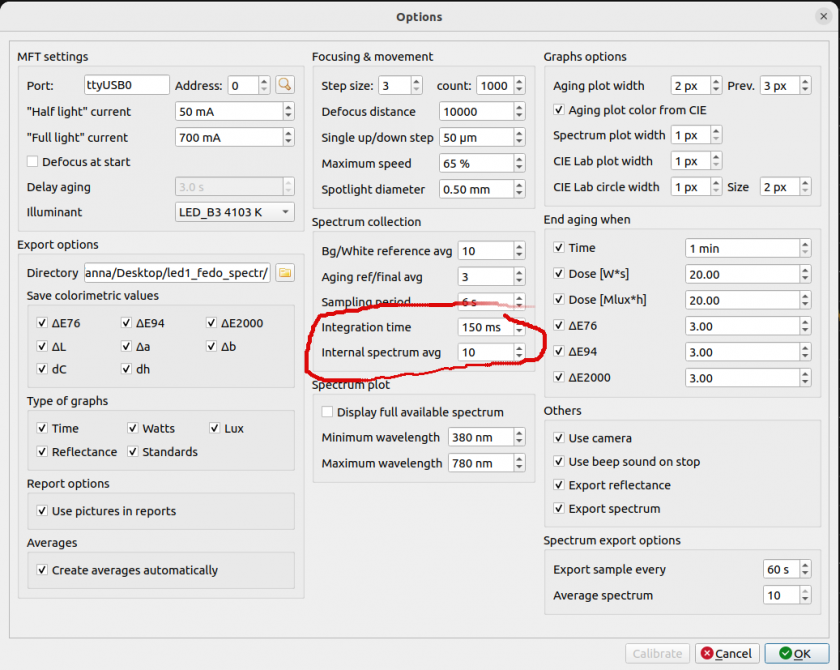Theoretical background for determination of sample color has been already introduced in the forum see CIELab. Now, let’s get to some practical issues.
The three human eye color perceptions
Firstly, let’s go back again to the three human eye color perception coordinates. To calculate CIEXYZ coordinates for reflective sample we use integrals below.
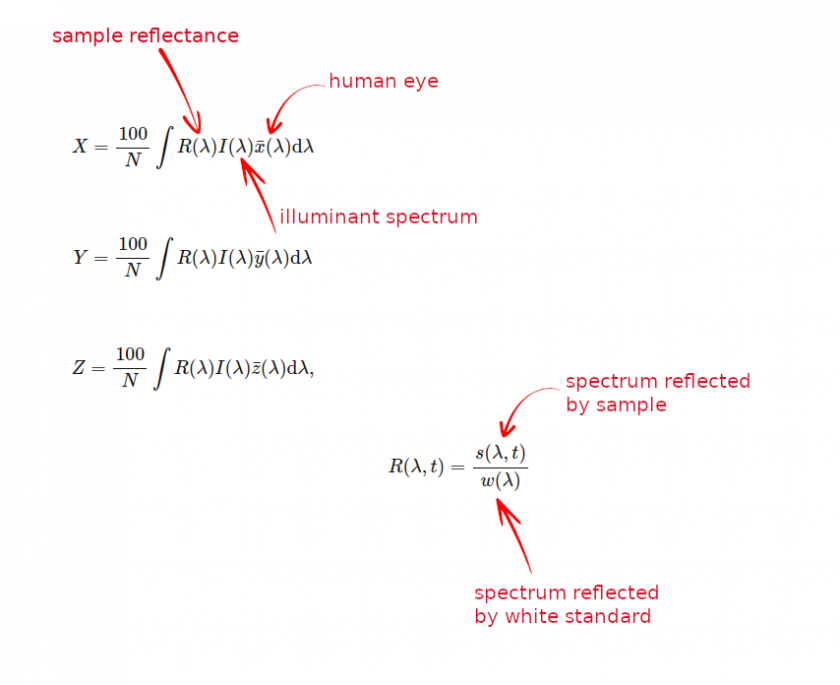
The XYZ values depend on :
the human eye characteristics (which are specified, invariant and do not depend on our measurement).
illuminant spectrum I($\lambda$) (which are specified in CIE standard, do not depend on measurement).
sample reflectance (this we obtain from measurements, sample reflected spectrum and white standard spectrum needed).
What we should be aware of is the fact that illuminating specific sample with different light source may result in different colors seen by the eye.
Below we may see the computed colors of the Fotolon (a white reference manufactured by Instytut Fotonowy) for all illuminants available in the MFT software. They are all computed for the same reflectance. In the CIE Lab tab of the software, there is a switch that lets you select an illuminant. It does not matter much which LED was used to obtain the reflectance. The result is approximately the same for all of the LEDs with possible deviations coming from measurement noise only.
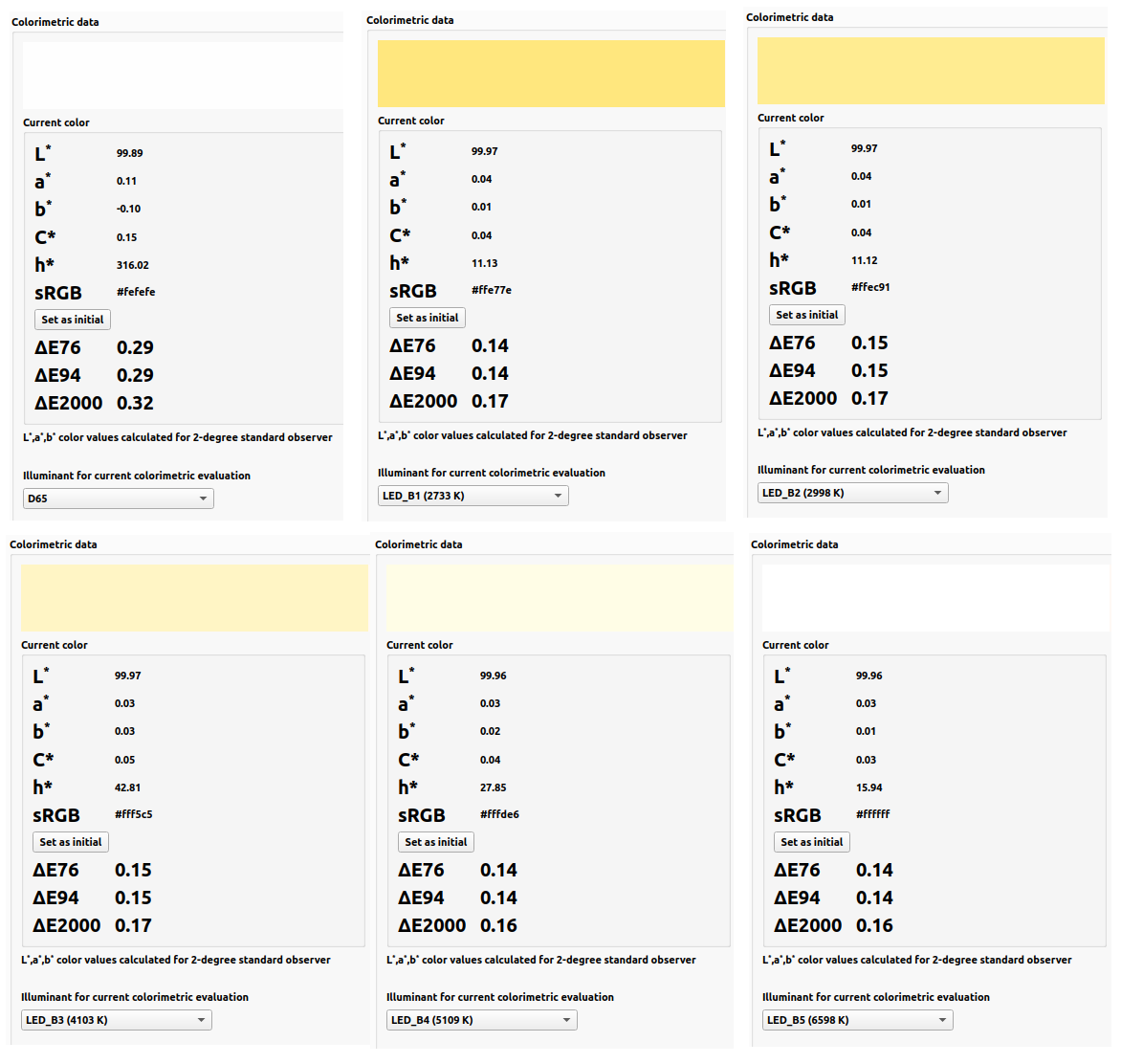
Top row illuminants: D65, LED-B1 (2733 K), LED-B2 (2998 K). Bottom row illuminants: LED-B3 (4103 K), LED-B4 (5109 K) and LED-B5 (6598 K).
Since the Fotolon is white one may be tempted to use either D65 or LED-B5( 6598 K) illuminants for aging as well because they give most the computed color closest to white. However, such a choice would not be appropriate.
The illuminant used for color assessment during aging procedure can be selected from Menu/Options/MFT settings/Illuminant. Notice, that selecting an illuminant in the CIE Lab tab affects only the color coordinates values in that tab. It is irrelevant to aging!
Reflectance example
In the picture below we may see the initial and final spectrum reflected by some sample
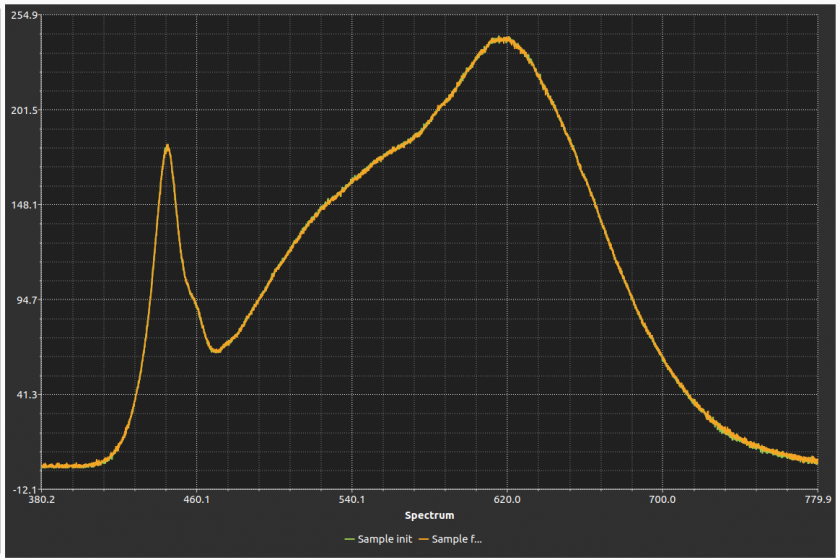
Both spectra are almost the same. That is why only one plot line is visible.
Now, let’s take a look at the reflectance of this sample calculated as a ratio of the spectrum $s(\lambda)$ above and the spectrum $w(\lambda)$ of a white reference
$$
R(\lambda) = \frac{s(\lambda)}{w(\lambda)}.
$$
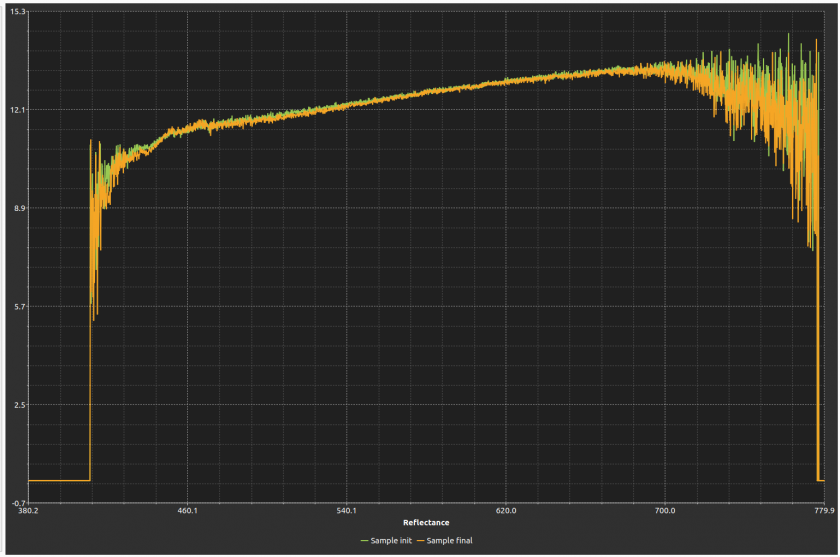
Now we see, that though the noise of the measured spectrum is very reasonable, the reflectance edges are very noisy. This comes from the fact that on these edges we have very little or no light from LED. We divide sample spectrum by white reference which is dominated by noise at the edges and that is why we get quite big fluctuations of reflectance values.
The noise in the reflectance does affect the CIE Lab results. So it does influence the aging curves.
However, a proper choice of the illuminant (in Options!) can reduce the noise.
If calculating CIEXYZ coordinates we have D65 Illuminant, which have much wider spectrum range than LEDs, the noisy values at both sides the reflectance will be multiplied by D65 spectrum so its impact on the resulted coordinates may be noticeable.
When one of the LED Illuminants are chosen to calculate CIEXYZ coordinates - the noise will be limited because the illuminant’s spectral range is similar to the range of an LED used in aging.
Example results
In the picture below the aging results of the stone sample (unaffected by light) are presented. What is important - the experiment was conducted for the same sample and for the same aging LED source. The same white reference spectrum was used for calculation reflectance for each presented aging curve.
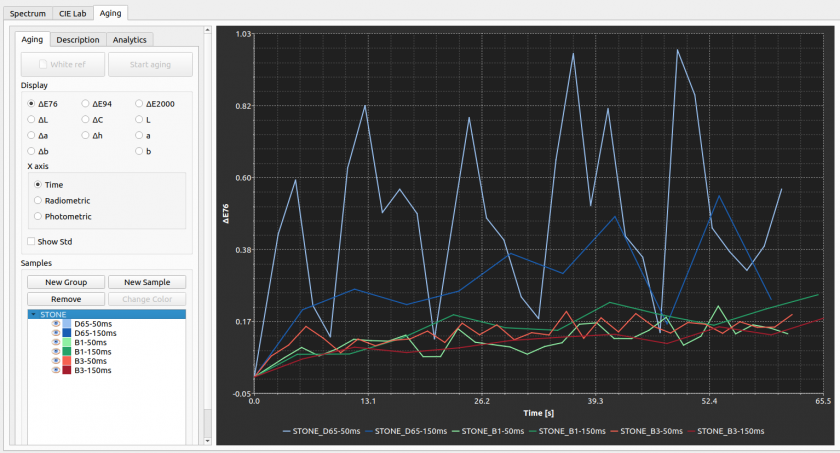
Two main conclusions emerge from this experiment:
It is much better to use one of LED illuminant instead of the D65 illuminant as we can reduce the impact of the noise at the reflectance edges.
To lower the impact of the noise we should take care of the signal level of the reflected sample. We need to keep in mind that when we have some dark sample the reflected signal is low compared with the measured white standard spectrum. To improve the signal one may adjust the parameters of spectrum collection in the Options. This issue is described in more detail in this post.
